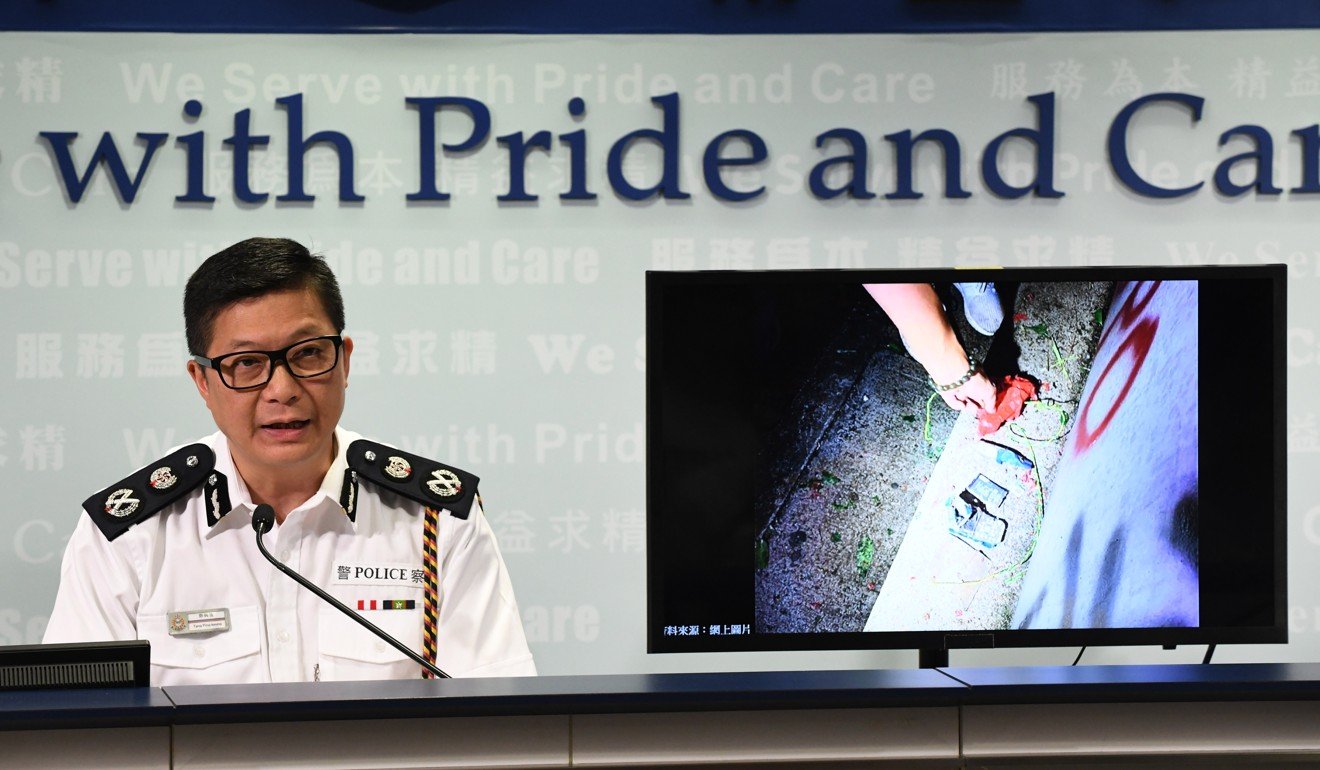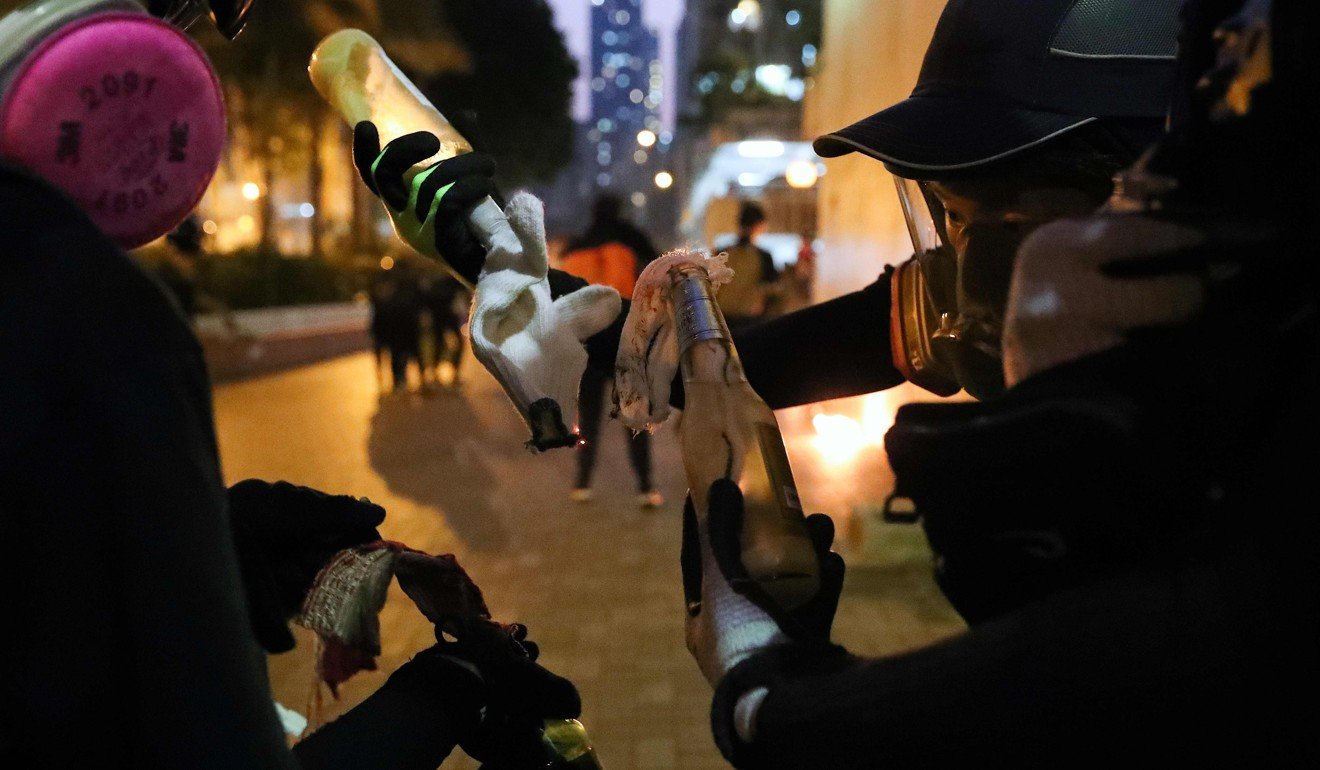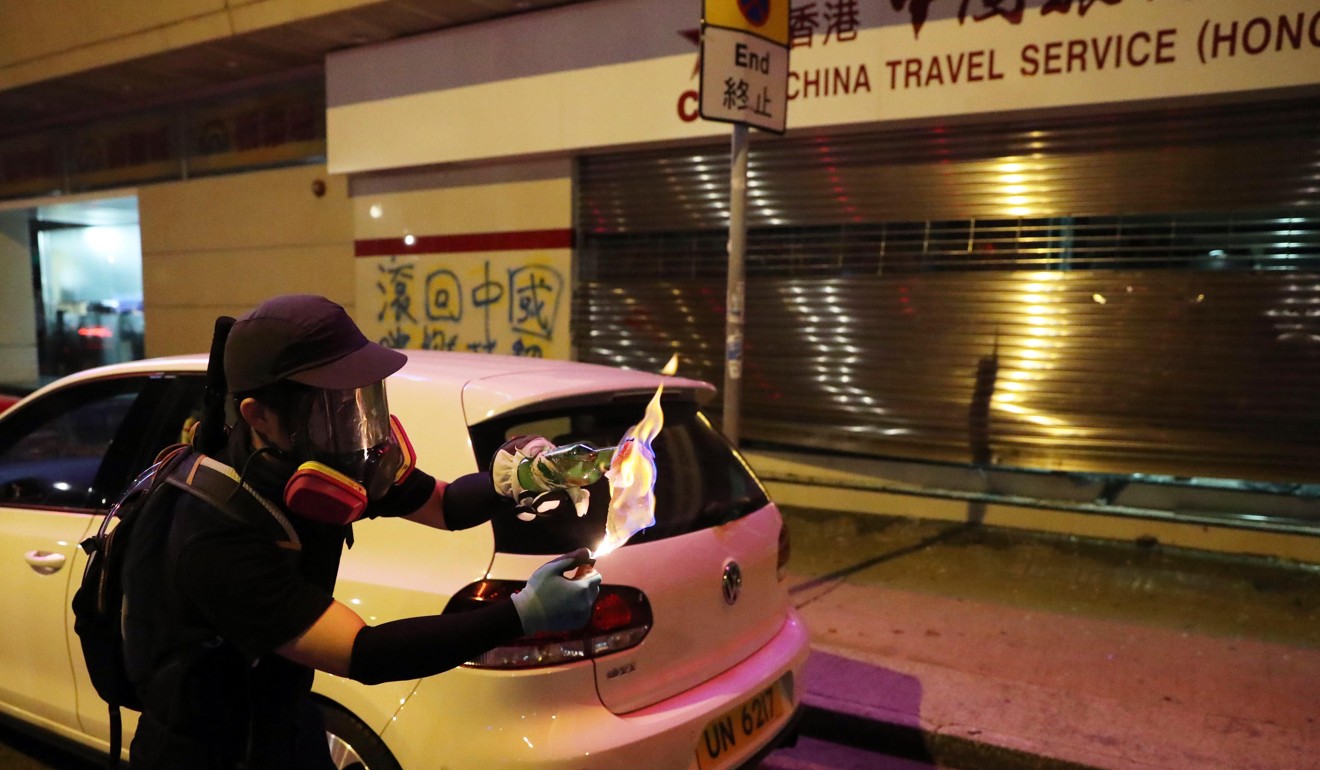
Police raid in Mong Kok raises threat of bomb-throwing drones planned for use in protests, as Hong Kong violence escalates
- Police found drones and throwing mechanisms, suspected sulphuric acid, protective gear and raw materials to make petrol bombs in flat
- Two people arrested in raid, one a 17-year-old student
The Post also learned that one modified mobile phone, which could be used as a trigger to detonate remote-controlled bombs, was also found in the Oak Street flat. No explosives were uncovered in the raid.
He said police also found some materials which were being converted into home-made explosives.
A police source said officers were investigating whether the two cases were linked.
Two people were arrested during the raid, one a 17-year-old student.

The seized items included three drones, three throwing mechanisms that could be installed on the drones, six petrol bombs and a large quantity of raw materials to make more, suspected sulphuric acid and protective gear, according to police.
The raw materials included petrol, thinner and glass bottles.
The police source said the drones, throwers and suspected sulphuric acid could be used to make airborne weapons. The discovery came two days after a home-made explosive was remotely detonated on Sunday by radical protesters, aimed at hurting police.
Police said the modified mobile phone was sent to the Explosive Ordnance Disposal Bureau at the force’s headquarters in Wan Chai for examination.
Carrie Lam closes recorded policy address with call for Hong Kong to end pessimism, rebuild with can-do spirit
Acting on police intelligence, officers intercepted two male suspects aged 17 and 23 on Larch Street, Mong Kok, around 7.30pm on Tuesday before raiding the Oak Street flat. In a follow-up raid, officers also seized four signal flares, five smoke bombs, knives and slings in a Whampoa Garden flat in Hung Hom.
Superintendent Raymond Chou said the Oak Street flat had been rented by one of the suspects since last Friday.
He said the two Hong Kong residents were suspected to have taken part in two unauthorised assemblies to protest against the government in Causeway Bay on August 31 and September 15.
Chou said officers were investigating the intended use of the seized items, and whether the two suspects were being directed by others or had any accomplices.

Police arrested the two men for unlawful assembly, possession of explosives and possession of offensive weapons. As of midday on Wednesday, the pair were being held for questioning and had not been charged.
In Hong Kong, attempt to cause an explosion, or making or keeping explosives with intent to endanger life or property carries a maximum penalty of 20 years in prison.
Beijing accuses US lawmakers of ‘sinister intention to destroy Hong Kong’, threatens to retaliate
The detonation of an improvised explosive device on Sunday marked the first time in the ongoing crisis that a device was used with the intent of killing or maiming police.
The remote-controlled bomb planted in a flowerpot between Fife Street and Nathan Road, in Mong Kok, exploded after police officers parked their car and got out to clear protesters’ roadblocks about 10 to 15 metres from the bomb. No one was injured in the Sunday incident.

The bomb contained a mobile phone, circuit board, battery and high-powered explosives.
On July 19, police arrested three people after raiding a home-made laboratory in a Texaco Road factory building in Tsuen Wan, seizing what was said to be the largest amount of deadly explosives ever discovered in Hong Kong. One of the three has been charged with possessing an explosive substance.
Separately on Wednesday, police arrested a 37-year-old man on suspicion of inciting others through social media to take part in an unauthorised assembly. He was picked up in Kwai Chung Estate at about 7am, and police also seized a computer and three mobile phones.

